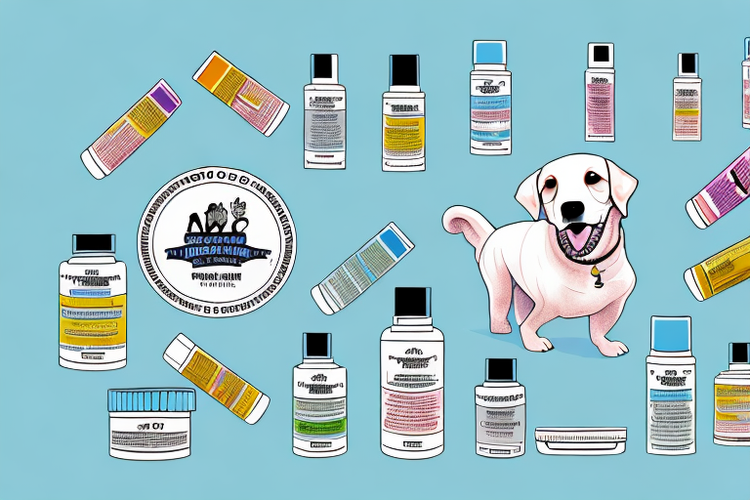In the fiercely competitive hotel industry, where profit margins are often razor-thin and guest expectations constantly evolve, achieving long-term financial success requires more than just offering a quality stay. For hotels to improve their profit margins, they must adopt strategies that optimize revenue streams and effectively manage costs. This can be achieved by harnessing the power of hotel revenue and expense data, which provides valuable insights into financial performance, guest behavior, and areas where operational efficiencies can be improved.
Critical Takeaways
- Leveraging hotel revenue and expense data can reveal opportunities for improvement and enable the implementation of data-driven strategies that boost profitability.
- Using a centralized revenue management system consolidates data from all hotel departments, offering a comprehensive view of financial performance.
- Employing dynamic pricing models helps optimize room rates based on real-time demand and competitor activity.
- Upselling and cross-selling complementary services and experiences can increase guest spending throughout their stay.
- Implementing loyalty programs encourages repeat business and incentivizes guests to spend more.
This guide delves into how hoteliers can effectively use hotel revenue and expense data to unlock hidden profits, improve hotel profitability, and gain a competitive edge.
Unveiling the Secrets of Hotel Revenue and Expense Data
Hotel revenue and expense data encompasses various financial metrics that illuminate the inner workings of a hotel’s operations. It includes room rates, occupancy levels, food and beverage sales, spa service bookings, labor costs, utilities, and other operational expenses. Analyzing this data provides a wealth of insights into guest behavior, spending patterns, and overall hotel profitability.
Understanding how to utilize this data allows hoteliers to implement strategies that maximize revenue, control costs, and ultimately improve profit margins.
Decoding Key Performance Indicators (KPIs)
For an effective revenue management strategy, tracking and analyzing Key Performance Indicators (KPIs) is essential. These metrics serve as benchmarks for evaluating the effectiveness of revenue-generating initiatives and identifying areas for improvement. Key hotel revenue and expense data KPIs include:
- Average Daily Rate (ADR): The average income generated per occupied room, which helps assess room pricing effectiveness.
- Revenue Per Available Room (RevPAR): Combines ADR and occupancy rate to measure revenue performance per available room, regardless of whether it is occupied.
- Occupancy Rate: The percentage of rooms filled on a given night. Higher occupancy often correlates with better financial performance.
- Total Revenue: Encompasses income from all hotel sources, including rooms, food and beverage, and other amenities.
- Total Expenses: The total operational costs, covering labor, utilities, maintenance, and administrative expenses.
By monitoring these KPIs, hotels can better understand their financial health and areas that require attention to boost profitability.
Leveraging Technology for Data Consolidation
In today’s digital age, a centralized revenue management system is indispensable for collecting and analyzing data. These systems integrate data from various departments—reservations, housekeeping, food and beverage, spa services, etc.—to offer a comprehensive view of the hotel’s financial performance. This holistic perspective enables hoteliers to identify trends, monitor expenses, and understand how different revenue streams contribute to overall profitability.
Harnessing Business Intelligence for Informed Decision-Making
Once data is consolidated, using Business Intelligence (BI) tools can transform raw data into actionable insights. BI software generates reports, uncovers trends, and reveals hidden patterns that help hoteliers make informed, data-driven decisions. This may involve optimizing pricing strategies, personalizing guest experiences, or identifying underperforming areas that need strategic changes.
Employing Dynamic Pricing to Capture Market Fluctuations
The hotel industry has moved beyond static pricing models. With the increasing competition and changing travel landscape, adopting dynamic pricing strategies that respond to real-time market conditions has become crucial.
Understanding Demand-Based Pricing
Demand-based pricing adjusts room rates according to fluctuations in demand. During high-demand periods or peak seasons, hotels can increase room rates to capitalize on guest interest. Conversely, during low-demand periods or off-seasons, offering discounts or promotions can help attract guests and fill vacant rooms.
Implementing Revenue Management Systems (RMS)
Revenue Management Systems (RMS) automate the dynamic pricing process by analyzing historical data, competitor pricing, and market trends. This software recommends optimal room rates to maximize both revenue and occupancy.
Case Study: Increasing Revenue through Dynamic Pricing
Consider a coastal resort hotel during the peak summer season. By using dynamic pricing, the hotel adjusts its room rates upward as bookings surge, capitalizing on the increased demand. Additionally, it can upsell premium room upgrades or exclusive amenities to further boost revenue, all while ensuring high occupancy levels.
Overcoming Challenges and Maximizing ROI
Dynamic pricing can increase revenue but also risks alienating guests who perceive fluctuating rates as unfair. Hotels can overcome this by communicating transparently, explaining the rationale behind price changes, and emphasizing the value of the stay. This approach helps maintain a positive brand reputation while maximizing revenue opportunities.
Read Also: Lobby Hotel Design Ideas to Boost Guest Experience (and Revenue!)
Upselling and Cross-Selling for Increased Revenue
Room rate optimization is not the only avenue for increasing hotel revenue. Upselling and cross-selling can unlock additional revenue streams by offering guests complementary products and services. These strategies depend on understanding guest preferences and behavior to make appealing offers that enhance the guest experience.
Identifying Upselling Opportunities
Upselling involves offering guests upgrades to more expensive room categories or providing premium services such as early check-in, late check-out, or access to exclusive amenities. Analyzing guest data helps identify upselling opportunities based on booking history, demographics, and spending habits.
Creating Effective Cross-Selling Offers
Cross-selling entails promoting complementary services, such as dining experiences, spa treatments, or recreational activities, to guests who have already booked a stay. For instance, bundling a dining package with a spa treatment can entice guests to spend more.
Utilizing Technology for Personalized Upselling
Technology, such as Customer Relationship Management (CRM) systems, can help tailor upsell and cross-sell offers based on individual guest preferences. This personalization not only increases the likelihood of successful upselling but also enhances guest satisfaction, driving revenue growth.
Measuring the Impact of Upselling and Cross-Selling
To assess the effectiveness of these initiatives, hotels should track KPIs such as upsell conversion rates, average revenue per guest, and guest satisfaction scores. This data enables hoteliers to measure the return on investment (ROI) of upselling and cross-selling efforts.
Building Loyalty and Driving Repeat Business
Cultivating loyal customers is vital for long-term hotel profitability. Loyalty programs reward repeat guests, encouraging them to stay longer and spend more.
Designing Attractive Loyalty Programs
A compelling loyalty program offers tangible benefits, such as points accumulation, discounts, or exclusive perks. Tailoring the program to meet guests’ needs ensures that it resonates with the target audience, driving repeat bookings.
Using Loyalty Data for Personalization
Analyzing loyalty program data helps personalize offers and experiences. Hotels can deepen relationships with guests by providing exclusive promotions, targeted discounts, or early access to special rates.
Measuring Program Effectiveness
To evaluate the success of loyalty initiatives, track metrics such as member retention rate, repeat guest spending, and lifetime customer value. These insights will help refine strategies for maximizing program impact on revenue and profitability.
Optimizing Food and Beverage Revenue
The food and beverage (F&B) department plays a significant role in hotel revenue. Implementing strategies to increase F&B sales can greatly contribute to overall hotel profitability.
Enhancing the F&B Experience
Delivering a memorable dining experience can boost guest satisfaction and increase sales. This involves using high-quality ingredients, providing exceptional service, and offering a diverse menu that caters to various dietary preferences.
Leveraging Technology for F&B Optimization
Using a Point-of-Sale (POS) system integrated with the hotel’s Property Management System (PMS) allows for accurate tracking of sales and inventory. This integration can help manage costs, streamline operations, and identify high-performing menu items.
Cross-Promoting F&B with Other Hotel Services
Cross-promoting F&B packages with other services, such as spa treatments or room upgrades, encourages guests to spend more and creates a holistic experience.
Controlling Costs to Maximize Profitability
Managing costs is as crucial as generating revenue for improving hotel profitability. Implementing cost-control measures while maintaining service quality is key.
Identifying Cost-Saving Opportunities
Analyzing hotel expenses can reveal areas for cost reduction, such as optimizing energy use, reducing waste, or streamlining procurement.
Benchmarking Performance
Comparing the hotel’s performance to industry standards can highlight inefficiencies and guide strategic adjustments to reduce operating costs.
Investing in Cost-Reducing Technology
Technology, such as automated systems for inventory management or energy efficiency solutions, can reduce manual labor and operational expenses.
Monitoring and Adjusting Strategies
Continuous monitoring of revenue and expense data ensures that strategies are effective. Regularly analyzing KPIs and adjusting tactics based on market trends helps maintain profitability and respond to changes proactively.
Conclusion: Unlocking Hotel Profitability
By leveraging hotel revenue and expense data, adopting dynamic pricing, upselling, cross-selling, and cost-control measures, hotels can optimize financial performance and improve profit margins. Data-driven decision-making empowers hoteliers to unlock hidden profits, enhance guest experiences, and achieve long-term success in a competitive market.
Want to learn more about maximizing your hotel’s revenue potential? Check out related case studies and expert insights to explore best practices for hotel revenue analysis and financial growth.
FAQs on Improving Hotel Profitability
- How can I improve my hotel’s occupancy rate?
- Implement dynamic pricing, optimize distribution channels, and tailor marketing efforts to target specific segments.
- What is the best way to measure revenue management success?
- Track KPIs like RevPAR, ADR, and occupancy rate to gauge the effectiveness of your strategies.
- How can I enhance guest satisfaction and encourage loyalty?
- Focus on delivering personalized service, offering loyalty rewards, and consistently exceeding guest expectations.
For further assistance, contact our revenue management consultants to get tailored solutions for your hotel’s profitability challenges.









